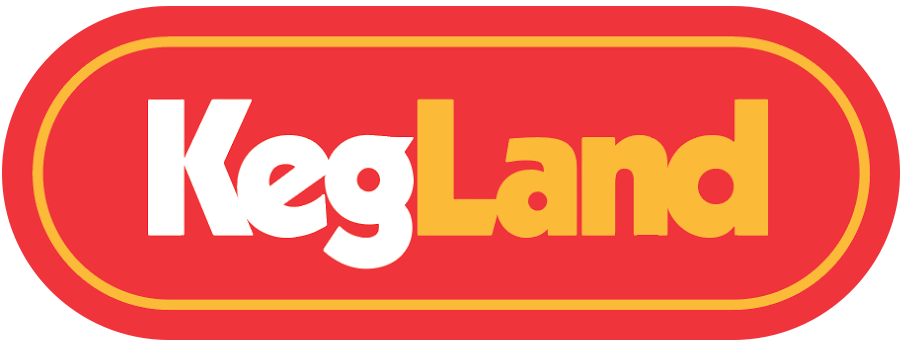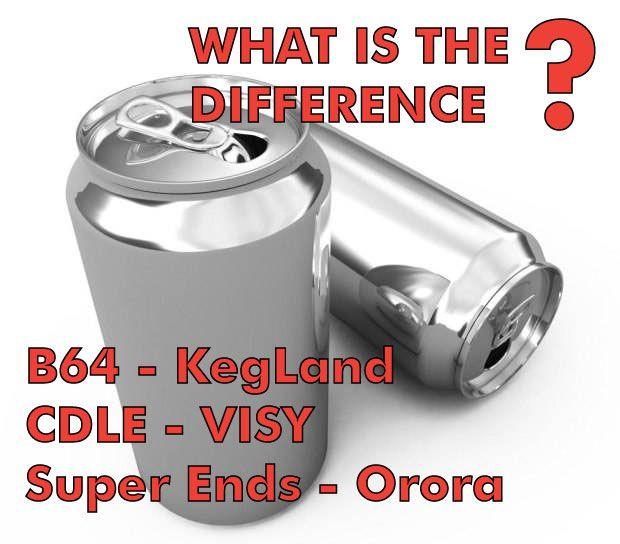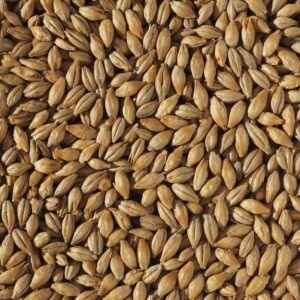So, how to get started in homebrew?
This is far and away one of the most common questions we field here at KegLand.
And the answer is…
… Well, it’s complicated.
There are a lot of options.
There are, in fact, many different, and equally valid ways to get into and pursue brewing amazing beer in this fantastic hobby.
So, we are going to narrow this down a little bit. Share our wisdom, gained as it has been over years of both brewing enthusiastically and also figuring out the very best way to get maximum beer enjoyment for minimum effort.
So, where to begin?
Well, there are three steps to brewing. We will cover all of them, in depth
First, Brewing – the process of extracting sugars and flavour from malt and adjuncts to make the sweet wort that becomes beer.
Second is Fermentation – it is often said that brewers don’t make beer, yeast does. And while this is true, careful control over the fermentation process can really help improve the final product.
Lastly you need to Package the beer. And, well, there’s a reason we are called KegLand, not BottleLand.
So, let’s begin our tour of Homebrewing 101
BREWING
This is where it all begins. Most people are familiar with the cans of Malt Extract that you can often find at supermarkets and bottleshops, and have a vague appreciation that these can be used for brewing.
But All Grain brewing is where it is really at. This is the process whereby you make the malt liquor – known as wort – from scratch, from malted grains.
Brewing this way is far easier than you may think, and is widely considered the best way to brew as it gives you absolute control over the beer. When brewing all grain, the sky is literally the limit in terms of what styles of beer you can brew.
The easiest (and one of the cheapest) way to get into all grain brewing is with an all in one brewery such as a Brewzilla. This type of brewery is a relatively recent homebrewing innovation, and it allows pretty much anyone to get into all grain brewing due to the low footprint, ease of use, convenience and ease of cleaning.
For a handy guide to some Brewzilla brewing tips and tricks check out this article.
Basically, the process is simple. First, heat a pre-determined amount of strike water in the boiler, add your milled grains and mash for (typically) 60 minutes. Mashing is the process of holding milled grains in a set volume of water at a set temperature for a set time. Typically 60 minutes at 65°C is very common.
After the mash is finished, it needs to be lautered. This is the term for draining the sweet wort into a kettle for boiling. If you are using a BrewZilla, then this is when you lift the malt pipe to let it drain.
Once this is done sparge the grains to collect the final boil volume. Sparging in this case is simply rinsing the drained malt with hot water to extract the remaining sugars and collect sufficient wort for your boil.
The boil is the second step. Boiling the wort serves three purposes. One, it pasteurises the wort. Two, it reduces the volume which increases the sugar concentration in order to get the desired gravity. Lastly, several important chemical changes occur during the boil, including protein formation and also volatile compounds that cause off flavours (such as DMS) are driven off.
Once the boil is done you can either chill the wort and transfer to a fermenter, or do like we do and No Chill it! This is the process of transferring the (still boiling temperature) wort to a No Chill HDPE cube, which is then sealed until the temperature has dropped enough for the wort to be transferred to a fermenter.
That’s it! It really is a simple process. It can seem a lot more daunting then it actually is until you try. Getting your head around the jargon that brewers throw out can also make it seem more complex as well.
Brewing All Grain traditionally is performed in what is known as a three vessel system - a mash tun, a kettler and an HLT (Hot Liquor Tank). The mash tun is where the mash happens. The wort is then sprged with hot water from the HLT and finally lautered into the kettle for boiling. All in one systems like the Brewzilla take the place of the mash tun and the kettle in one super handy uinit with a relativlely tiny footprint, so the only addition is an HLT - which can be a cheap oiler or even a big pot at a homebrew level.
For an in-depth look at the brewing process please refer to this article. we cover brewing with a Brewzilla (or similar all in one brewery) in depth.
If you feel ready to give all grain brewing a try, we think that the 35L Brewzilla is a brilliant and economical way to get started. It’s a super compact and easy to use all in one brewery, that is basically complete and ready to go. The only other accessories you might need are a jacket (really helps to keep temperatures stable) and a light duty mash paddle – you definitely want a stainless paddle when you step up to the big time.
If you are brand new to brewing, then the BrewZilla Beginner’s Bundle has pretty much everything you need to get going, including hydrometers for checking gravity, cleaning and sanitising chemicals etc. It’s a one click option for the new aspiring all grain brewer!
FERMENTING
Brewing is where the wort is made. Fermentation is where the magic happens though. Yeast + wort + time = delicious beer!
Fermentation is probably where a lot of the angst in brewing happens, as it is mostly a hands off process. It’s easy for brewers to forget that yeast actively want to make beer! They are happiest when they have sugars to much on, and they will do so until they run out of sugar.
Look, fermentation is easy. Put wort in a sanitised fermenter. Add yeast. Wait.
If there doesn’t seem to be any activity? Be patient. If activity looks too vigorous? Don’t worry. It’s fine. It’s actually pretty hard to stuff up this side of the brewing process.
There are definitely a few ways to improve the process though. We would recommend looking at two aspects of fermentation – namely, temperature control and pressure fermentation.
The subject of fermentation is something that can be delved into quite a bit. To that end we have a separate article which breaks this down in quite a bit of detail.
Beer can be fermented in almost any vessel that can be sealed and have an airlock added. The airlock is need as CO2 will be produced during fermentation, which will cause a potentially dangerous build up of pressure unless it is allowed to vent. An alternative is to use a pressure capable fermnter and a device known as a spunding valve, to control the pressure build up during fermentation - you will find a breakdown of pressure fermentation, as it is known, in this article.
Typically an inexpensive HDPE fermenter is a super cheap way to start, but we highly recommend a FermZilla (which is pressure capable) as you progress, especially if you are kegging your beer instead of bottling.
During fermentation you will see airlock activity as CO2 is vented. You will also most likely see the formation of a krausen, which is a rocky head that develops during active fermentation. The krausen will usually drop, and airlock activity will lsow or stop as fermentation winds down, but it is importnat to note the the only way to be certain that fermentation is finished is by takig a gravity reading. If the gravity is in the expected range and remins stable for at least two and ideally three days in a row you can be sure that your beer has finished fermenting and is ready for packaging.
PACKAGING
This is the final stage of brewing, and the last step before it can be consumed.
Broadly speaking, you are either going to package your beer in bottles or kegs. There are pros and cons to both, but… lets face it, kegging wins hands down.
We completely appreciate that you may not have the time, space, means or inclination to jump straight into kegging – I bottled for several years before stepping up to kegging. If bottling, we recommend fermenting in a fermenter with a tap such as this. That way, it is quite easy to rack the beer into bottles once fermentation is done.
When bottling, carbonation is achieved through a secondary fermentation in the bottle. Thus, you need to add a pre determined amount of sugar to provide the correct levels of carbonation. This can be added to the fermenter or the bottles before racking the beer into the bottles. The bottles must then be tightly sealed and left somewhere warm for 2-3 weeks to allow the secondary fermentation and carbonation to occur.
Kegging is in many ways a simpler process. There is no need for a secondary fermentation as the the keg will be connected to CO2 directly, which will then carbonate the beer. Through increased pressure or other means this can be done at serving pressure over a week or two, or almost instantly should you wish. This is known as forced carbonation. With kegging, there are no bottles to clean, sugar to dose etc – it is a super quick and easy process. As you can transfer finished beer under pressure and without introducing oxygen, it is also a great way to improve the flavour and shelf stability of the beer.
We have a detailed breakdown of the various ways to transfer finished beer into a keg in this article.
Once your beer is packaged, chilled and carbonated, it is ready to drink.
RECOMMENDED EQUIPMENT
There are many ways to get started in homebrewing. We like to think we have a pretty good handle on the best and most economical ways to get into all grain brewing from scratch. The following is a list of the gear that we brew with - designed, tried and tested by the KegLand Brew Crew!
For brewing, you can't go past a 35L Brewzilla - either the super affordable Gen 3.1.1 (recommended for newbies) or the brand new Gen 4 - probably a better idea if you are an experienced brewer.


The Gen 3.1.1 comes in a beginners pack which is brilliant value if you are starting from scratch.
Otherwise just grab a jacket, a mash paddle and a No Chill cube and youi are ready to brew.
We also have a large range of tried and true All Grain Recipe Kits designed specifically for the Brewzilla range - they are a great way to ensure your first beer will be memorable for all the right reasons!
There are probably three choices for fermentation.
If you are going to start out with bottling instead of kegging, then the FermZilla Flat Bottom kit is perfect. it comes with everything you need to ferment and bottle, including the bottles!
If however you are going to keg your beer from the outset, then definitely look at either the 30L All Rounder or the Gen 3 27L Tri Conical FermZilla Pressure Brewing Kits. These come with everything you need to ferment and transfer under pressure. If you will be kegging (which we wholeheartedly recommend) then these are hands down the best value fermenters on the market. The All Rounder is brilliant for those who want fuss free fermentation, as well as a super easy cleanup. The Trii Conical is amaxingly poweful and flexible, but a bit more complex in use. Either will work really well though.
You should also grab a Big Jumper Kit, so that you have the transfer lines needed for transferring your finished beer into the keg from the fermenter.
Lastly, if bottling that is pretty much the end of the process. However, if kegging you will need a way to dispense your kegged beer.
You can grab kegs here. If you have a fridge large enough to hold a 19L keg then a starter kit is the most economical way to get into kegging your beer.
Of course, a kegerator is pretty much the aspiration - there's literally nothing quite like having your own homemade high quality kegged beer on tap at home. Any of these kits will do the job, and you might be surprised at how affordable they are.
Hopefully this breaks fdown both the process and the equipment needed for you. If you are still confused or have further questions please reach out to our dedicated staff - we are only too happy to help!



